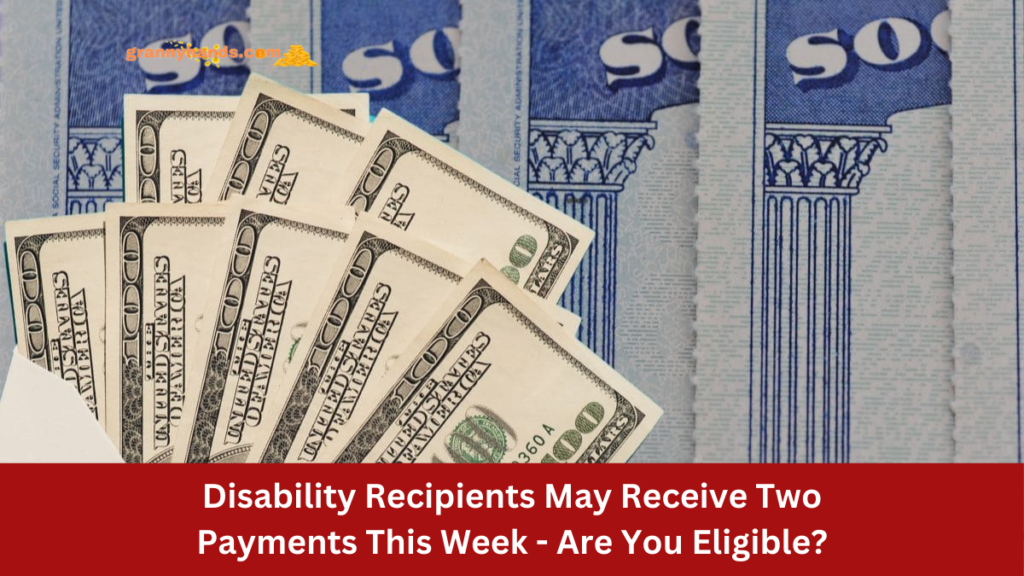In the U.S., Social Security Disability Insurance (SSDI) and Supplemental Security Income (SSI) provide crucial financial support to millions of Americans facing disabilities. This week presents a unique scenario where some recipients might receive two payments due to overlapping schedules and specific eligibility criteria.
Here’s a look at how and why these dual payments occur, what criteria must be met, and who can benefit from this unique opportunity.
Eligibility Criteria For Disability Payments This Week
Each program has established guidelines dictating payment schedules, which occasionally create overlaps allowing for dual payments. This week’s circumstances arise primarily because of calendar-specific scheduling rules, especially for those receiving both SSDI and SSI. Eligibility hinges on factors such as when the recipient’s disability payments began and the financial guidelines set by each program.
For instance, SSI primarily benefits individuals with low income and resources, while SSDI eligibility is tied to the recipient’s employment history and the date their disability payments began. By meeting criteria for both programs, recipients can sometimes benefit from dual payments in the same week.
SSDI Payment Schedule Requirements
Social Security categorizes beneficiaries based on their SSDI start date. Those who began SSDI benefits before May 1997 are placed in Group 1 and typically receive their payments on the 3rd of each month. However, when the 3rd falls on a weekend or holiday, the payment is issued on the preceding business day. This overlap can align with the SSI payment schedule, leading to two checks arriving within the same week for qualified recipients.
For recipients in other groups (those who began SSDI after May 1997), payment dates vary according to the recipient’s birth date, which means they do not experience the same regular overlap with SSI payments.
SSI Recipients’ Eligibility for Dual Payments
The SSI program is focused on aiding individuals with low income and resources, meaning it’s not exclusively for those with disabilities. Unlike SSDI, which is tied to past work history, SSI helps individuals meeting income and resource limits, allowing broader eligibility. SSI payments are generally scheduled for the 1st of each month, but like SSDI, this date is adjusted when it lands on a weekend or holiday.
This scheduling adjustment often synchronizes with SSDI payments, enabling recipients who qualify for both SSDI and SSI to receive two payments within a single week.
No Disability Requirement for SSI Benefits
SSI eligibility is independent of disability status, which broadens the scope of potential beneficiaries. In addition to individuals with disabilities, the program supports those who meet the stringent income and resource limits and are U.S. residents.
While SSDI is exclusively for those with a documented disability, SSI recipients include seniors and others who may not qualify for SSDI but still require financial assistance. This distinction allows more people to potentially qualify for dual payments under the right conditions.
| Benefit Type | Group | Eligibility Requirement | Payment Day | Approx. Amount |
|---|---|---|---|---|
| SSDI | Group 1 | Started before May 1997 | 3rd of the month | $943 |
| SSI | All | Low income and resources | 1st of the month | $943 |
| Dual Payment | Group 1 + SSI | Meets both SSDI and SSI criteria | Within the week | Varies |
| Total Possible | Dual Eligible | Eligible for both SSDI and SSI | Within the week | Combined |
The table highlights the overlapping schedule and criteria for dual payments, emphasizing that those who meet both SSDI and SSI qualifications may enjoy added financial support in this rare instance.
FAQs
1. What are the qualifications for Group 1 SSDI recipients?
Recipients in Group 1 include individuals who started receiving SSDI benefits before May 1997. They qualify for their payments on the 3rd of each month or the preceding business day when the 3rd falls on a weekend or holiday.
2. Can SSI recipients receive two payments in the same week?
Yes, if they meet criteria for both SSI and SSDI, particularly Group 1 recipients, who receive their SSDI payments on the 3rd of the month, potentially aligning the two payments in the same week.
3. Is disability status mandatory for SSI eligibility?
No, while SSDI requires a documented disability, SSI eligibility is based solely on income and resource limits, making it available to seniors and other low-income individuals.
4. How much is the typical SSDI and SSI payment?
Generally, SSDI and SSI payments each amount to about $943 per month, though exact figures can vary according to specific qualifications and annual adjustments.
5. When should eligible recipients expect their payments?
Typically, SSI payments are scheduled for the 1st, and SSDI for the 3rd of each month. Adjustments occur if these dates fall on weekends or holidays, allowing for an aligned payment schedule within the week.
This information provides a comprehensive guide for recipients to understand how overlapping payment schedules might bring added financial benefits, creating an opportunity for those who meet the eligibility requirements to receive both SSDI and SSI payments in the same week.






